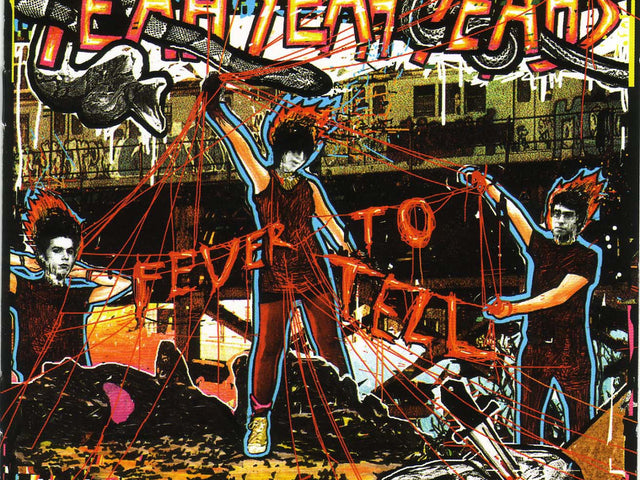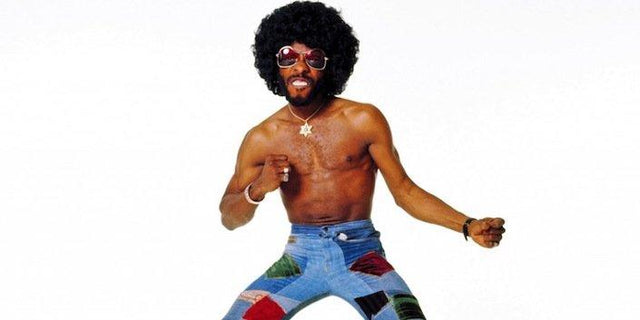Hvis det er noe format som virkelig tilhører vinyl-æraen, så er det dobbeltalbumet. Å holde coverkunsten i hendene er fantastisk i seg selv, men opplevelsen som er så sentral for vinylsamling, blir bare bedre med store gatefold-cover som åpner seg foran øynene dine. For ikke å nevne fire sider musikk, hver med sin egen begynnelse, utvikling og slutt. Dobbeltalbumet gir egentlig bare mening når det oppleves på vinyl: i CD-æraen, der en enkelt plate kunne inneholde opptil 80 minutter med musikk, så det ut til at selv vanlige album ble mer fyllstoff og mindre killer. I den grenseløse epoken av streaming og digital nedlasting, gir dobbeltalbumet kanskje minst mening av alle.
nDet betyr imidlertid ikke at alle dobbeltalbum kan klassifiseres som sådan. Dobbeltalbumet er en vanskelig størrelse, ettersom mange av dem som er mer eventyrlystne enn beundringsverdige beviser dette. Enkelt sagt: det er bare for mange dobbeltalbum som ikke trengte å være et dobbeltalbum. Kunstnere som setter seg som mål å oppnå et kunstnerisk høydepunkt i karrieren, og som tror at formatet kan hjelpe dem med å oppnå dette, feiler ofte og ender opp med å gi ut overdimensjonerte album som ville vært mye nærmere de tiltenkte mesteverkene dersom de ble endret til et omfattende enkeltalbum. Disse 10 som følger lider imidlertid ikke av dette problemet.

Bob Dylan: Blonde On Blonde
Som med så mange ting i popmusikk, var Bob Dylan den som brakte dobbeltalbumet til rockens mainstream. Det hadde vært noen relativt vellykkede dobbeltalbum i jazz før, men Dylans Blonde On Blonde brakte formatet inn i rampelyset tidlig i 1966. Dylan, som bare var 25 på den tiden, låste seg inne i et studio i Nashville, hvor han arbeidet med en mengde studs musikere. Blonde On Blonde ble et symbol på den kreative selvtilliten til en av de største låtskriverne gjennom tidene, med Dylan som vanligvis lagde sine tekster på stedet. Den dag i dag høres dobbeltalbumet strålende ut og markerer et av de mest spennende øyeblikkene i Dylans omfattende karriere.

Jimi Hendrix: Electric Ladyland
Det tok ikke lang tid før andre rockgiganter gjenkjente dobbeltalbumet som en mulighet til å utforske og eksperimentere. I tilfelle av Jimi Hendrix, var gjenstanden for hans fascinasjon, selvfølgelig, elektrisk gitar. Som Dylan hadde gjort i Nashville, så forstod Hendrix, da han var 26, studioet som et annet instrument. Innspillingen av Electric Ladyland fant sted i det berømte New York-studioet med samme navn, hvor Hendrix selv produserte dette tohodete bluesmonstret. Electric Ladyland, som varer i 75 minutter, har to versjoner av "Voodoo Chile," hvorav den ene fungerer som albumets avslutning og blir forutgått av "All Along The Watchtower" og "House Burning Down."

The Beatles: The Beatles
Det er kanskje verdens mest kjente dobbeltalbum, og rettmessig så. I 1968 blåste The Beatles verden av banen da de så ut til å oppsummere alle sider av sin musikalske personlighet i ett prosjekt. Utgivelsen som det resulterte i, ofte kalt The White Album, har et større spenn enn andre band sin komplette diskografi. Etter mye av materialet hadde blitt skrevet under meditasjonskurs i India, brøt det ut krangler blant bandmedlemmene mens de spilte inn albumet i London, med tilstedeværelsen av John Lennons nye partner Yoko Ono som viste seg å være problematisk. Det virker derfor passende at The Beatles kanskje er den mest delte platen i Fab Four sin diskografi, med sine postmoderne tekster som vekker kontroverser og angivelig inspirerte Charles Manson.

Miles Davis: Bitches Brew
Vinyl, og dobbeltalbum spesifikt, lar musikken puste. Og her er det virkelig mye pusting som skjer, på Miles Davis’ Bitches Brew. Hyperventilering, for å være mer presis. I 1970, forårsaket den mesterlige trompetisten sin egen big bang, ved å kombinere elementer inntil de kulminerte i en radikal omskrivning av jazzregelboken, og sa farvel til bebop og omfavnet afrikansk musikk. To bassgitarer og tre elektriske pianoer sørget for at Davis disponerte over en ny palett til å fargelegge sine komposisjoner med. En av disse bassgitarene ble spilt av Harvey Brooks, som tidligere hadde vært sammen med Bob Dylan, og så ut til å symbolisere Davis’ omfavnelse av akkordprogresjoner assosiert med rock, og gjorde Bitches Brew til et av de første albumene som overskred sjangere og skapte nye på sine egne premisser.

The Who: Quadrophenia
Det finnes to typer dobbeltalbum, grovt sett: dobbeltalbum som gir artister det rommet de ønsker og dobbeltalbum som gir artister det rommet de trenger. The Who’s andre rockopera faller absolutt inn i den sistnevnte kategorien. Etter den kommersielle suksessen med Who’s Next, en personlig skuffelse for Pete Townshend, trådte The Who litt kjent terreng med 1973’s Quadrophenia. Det britiske bandet hadde allerede oppnådd anerkjennelse med sin tidligere bisarre, men geniale rockopera Tommy. Så radikal som den utgivelsen virket, så (relativt) raffinert var Quadrophenia, et album uten hindringer av suksessen til et enkelt som ‘Pinball Wizard’ og et prosjekt med rett og slett for mye historie til å fortelle for et enkelt album. Townshend & co. forteller historien om Jimmy, en av deres første fans, satt mot bakteppet av mod-bevegelsen på sekstitallet som disse mesterne selv tilhørte. Selv om Who trakk på sine egne røtter her, viste fortellingen om en ensom gutt som søker kjærlighet i byen seg å være like tidløs som mye av musikken på Quadrophenia.

Led Zeppelin: Physical Graffiti
Dobbeltalbum kan gi artister muligheten til å gå inn i tidligere ukjente territorier, men de gjør det også mulig for dem å perfeksjonere elementer de har utøvd tidligere. I 1972, reiste Robert Plant og Jimmy Page til India sammen og ble inspirert av lokale studio musikere. Innspillingene de gjorde la grunnlaget for det mest ekstreme og eklektiske albumet det normalt relativt økonomiske bandet noen gang har utgitt. Det er mer eventyr i den frie flyten i "In My Time Of Dying" enn det noen gang har vært på andre 11 minutter, og å lytte til "Kashmir" og "In the Light" viser en gang for alle at Led Zeppelin var, det tyngste bandet på planeten.

Stevie Wonder: Songs in the Key of Life
Det er mye med Songs in the Key of Life, det viser seg: dette 1976 dobbeltalbumet av Stevie Wonder klokker inn på nesten to timer, og hvert minutt av det er like gledelig som det forrige. Her gir Wonder rom for en helt annen kvalitet av dobbeltalbumet. Formatet er ikke bare ment for seriøse konseptuelle overflod: det er også ment for å ha det gøy og gi full uttrykk for din multi-instrumentalisme og musikalskhet, som Wonder gjør på store hits som "Sir Duke," "I Wish" og "Isn’t She Lovely." Songs in the Key of Life var Stevies attende album, men en av de mest populære figurene i R&B og popmusikk her høres så entusiastisk ut som alltid, som et barn i en godteributikk. Det fargerike bildet dette albumet fremkaller berikes bare av kunnskapen om at Wonder ikke bare disponerte av synthesizer keyboard og saksofoner, men også av en soulfull all-star besetning inkludert Herbie Hancock, George Benson og Minnie Ripperton.

Pink Floyd: The Wall
Bandet som hadde dominert tiåret ga ut sitt siste mesterverk i de siste ukene av 70-årene. Passende nok, Pink Floyd’s The Wall benyttet muligheten til samtidig å reflektere over Roger Waters’ ubehag med bandets superstjernestatus. The Wall ble nesten helt utformet av Waters, som også hentet inspirasjon fra sin fars død under den andre verdenskrig, som albumet begynner med. På mange måter, tar The Wall farvel med Pink Floyd, med protagonisten i prosjektet modellert etter Waters og bandets originale frontmann Syd Barrett, og håndterer Waters sin av og til selvpålagte isolasjon fra samfunnet. Sanger som "Comfortably Numb" og "Another Brick in the Wall Part II" er både hit-singler og lyden av Pink Floyd som faller fra hverandre. Det lager et av de mest fascinerende albumene i bandets karriere: de ville gå videre til å gi ut tre album til, men aldri gjorde det med det klassiske line-up og klarte aldri å lage en annen plate som kunne stå i skyggene av The Wall.

The Clash: London Calling
The Clash ropte på en sosial bevissthet tilbake til popmusikken med sin truende blanding av ska, reggae, R&B, punk og powerpop. På London Calling, lager Joe Strummer og Mick Jones et overbevisende case for eierskap til etiketten Last Angry Band, som ofte tillegges dem. Albumet, som fulgte opp The Clash’s selvbetitlede debut og Give ‘Em Enough Rope, ble faktisk et dobbeltalbum på grunn av den energiske farten hvor de to skrev sine sanger. Det tillot britene å lage et brutalt album om individualisme og isolasjon, så skarpe synspunkter som det var av tone.

Prince: 1999
Prince er kanskje den eneste musikeren som noen gang har utgitt et dobbeltalbum uten å ville det. I 1982, improviserte Purple One mye i sitt hjemme-studio i Minnesota, og spilte inn sanger så snart inspirasjonen traff ham. Blant hans arbeider var danserhiter, vakre ballader og bråkete rockere, som snart dannet mer materiale enn ett album kunne inneholde. "Jeg ønsket ikke å lage et dobbeltalbum, men jeg fortsatte bare å skrive og jeg er ikke en som redigerer", fortalte Prince til Los Angeles Times senere det året, da 1999 ble utgitt. Albumet ble artistens gjennombrudd, med kanskje de mest funky sangene han noensinne hadde utgitt. Da den originale Blade Runner ble utgitt på sommeren av 1982, begynte Prince å inkorporere filmens futuristiske stiler og temaer inn i musikken. Han lyktes helt sikkert: spor som albumåpner "1999," "Lady Cab Driver" og "Little Red Corvette" høres fortsatt ut som de kunne blitt utgitt i morgen.
Únete al Club!
Bli med nå, fra 44 $Exclusive 15% Off for Teachers, Students, Military members, Healthcare professionals & First Responders - Get Verified!







